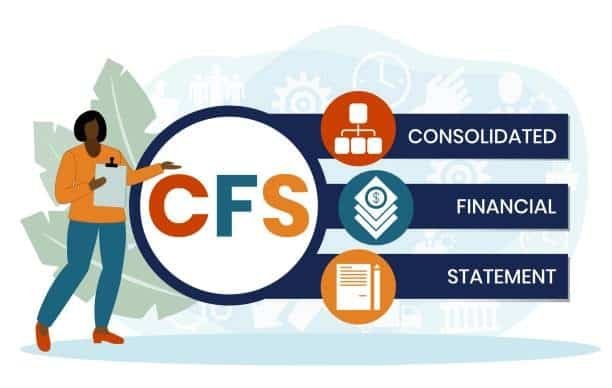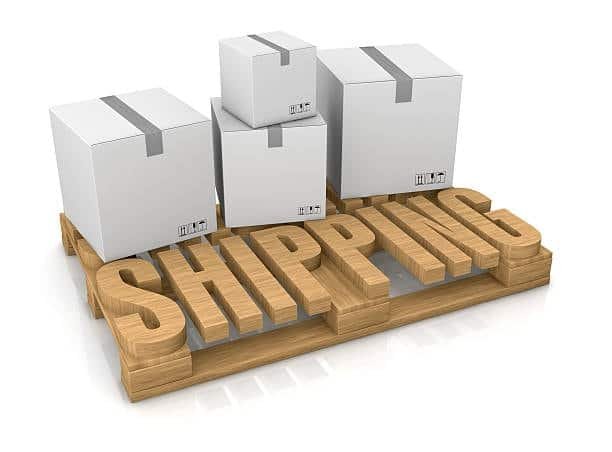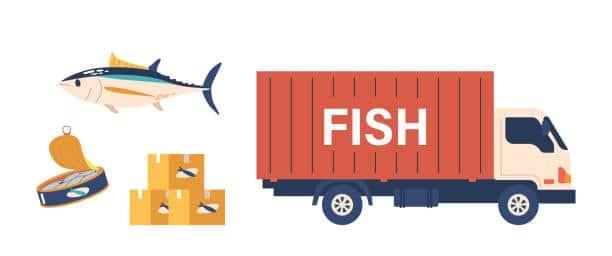How to Calculate CFS Charges: A Complete Guide for Importers and Exporters
By Guanwutong / June 13, 2025
Many importers and exporters have a hard time figuring out and estimating Container Freight Station (CFS) charges which make up a big part of all international shipping costs.
Because these charges often add a lot to your logistics budget, it is important to understand how to calculate them well. You will learn all about consolidated shipments, CFS charges and cfs shipping , from the first principles to the most advanced ways of calculating them.

1. What is a Container Freight Station (CFS)?
A Container Freight Station helps by merging Less than Container Load (LCL) cargo and placing it into containers for smooth ocean transport or removing cargo from containers ready for the final delivery step. With Full Container Load (FCL) shipments, you rent a full container, but with lcl shipments, your cargo is combined with other shippers in a container and handled at a specialized CFS.
2. Understanding CFS Operations and Services
Important functions at the CFS facility are accepting, checking and handling cargo, handling documentation, managing the grouping and separation of goods, temporary storage and assistance with customs clearance procedures.
To operate safely, storage firms need specific machinery, well-trained staff and specific areas which are among the factors that lead to more expenses for you. Once cargo gets to a CFS, it is inspected, checked for weight and measurements and all documents are verified before it is prepared for further transit.
3. Primary Types of CFS Charges
CFS operations require several different kinds of charges and each charge plays a unique function in handling cargo. The main categories consist of handling charges which handle the loading and moving of your goods throughout the facility, which contribute to overall transportation costs.
Usually, these charges appear per shipment or for each item you’re shipping and they cover the work and tools used to receive, sort and get your cargo ready for moving or delivery.

4. Storage and Warehousing Fees
The period your cargo is in the CFS facility affects the amount of storage charges. Usually, the first few days of storage are free and you will have to pay for storage from then on. The charges are increased as time goes by to ensure speedy pickup of goods at the destination port and continued good efficiency in supply chain operations at the facility. Grasping how storage fees work lets you arrange cargo clearance at times that save you money.
5. Documentation and Processing Charges
Fees for documentation and processing are for the work involved in managing a shipment such as documents for customs, cargo notes and communication with different supply chain parties. Fees may be set up as per shipment, per bill of lading or as a share of the cargo’s total value, depending on both the facility’s rules and the shipping bill paperwork needed.

6. Special Handling and Additional Service Fees
Extra costs for cargo inspection, photography, repacking or special handling are added when clients need these services. Charges for security and insurance may be charged, mostly for goods that require significant protection throughout the bonded cfs warehouse storage and handling process. Such services are priced high because they are specialized.
7. Weight vs. Measurement Calculation Method
The key part of calculating a CFS charge is figuring out the chargeable weight based on the “weight or measurement” (W/M) approach. Actual weight is compared to volumetric weight and charges are added for whichever one is greater. For calculating volumetric weight, you use the dimensions in cubic meters, multiply by a factor (such as 1 cubic meter equals 1000 kilograms for air freight) and take the result.

8. Cargo Type and Commodity Factors
Different cargos cost differently and if you need to transport things such as chemicals, perishables or large items, special procedures and safety must be arranged, highlighting the importance of supply chain management . Because these services need certain special assets, personnel and facilities, including container loads the rates for transporting hazardous materials are increased.

9. Geographic Location and Regional Variations
Different cargos cost differently and if you need to transport things such as chemicals, perishables or large items, special procedures and safety must be arranged, highlighting the importance of supply chain management . Because these services need certain special assets, personnel and facilities, including container loads the rates for transporting hazardous materials are increased.

10. Peak Season and Demand Surcharges
Surcharges may be charged by the carrier at peak times, when cfs fees typically cover too many packages arrive and the facility is at its limit. Usually, there are surcharges issued during the busiest times of the year such as holiday and shipping seasons in the shipping industry . Once you see when shipments are especially busy, you can plan your shipments outside these peak times.

11. Step-by-Step CFS Charge Calculation Process
You need to follow a particular process to calculate CFS charges as part of the entire shipping process . Collect important data like the cargo’s weight, dimensions, kind and how long it will be kept for storage loaded containers.
Determine the chargeable weight by seeing which of the two, actual weight or volumetric weight, is higher. Charge basic handling fees by multiplying your chargeable weight by the facility’s handling rate and add storage charges based on the period the goods will stay after the free limit ends.

Practical Calculation Examples
A typical LCL shipment has weight of 500 kilograms and dimensions of 2 meters x 1 meter x 1 meter, for a total cargo volume of 2 cubic meters. Using the standard formula, the volumetric weight is 2000 kilograms, therefore that weight will be used for charging. When the CFS handling rate is $50 per ton, your basic handling fee would be $100. Add money for storage days over the free period, any related document costs, and also consider the container load plan to find the total expenses full container loads.
Cost Optimization Strategies
You need to carefully plan and improve CFS processes to manage your costs well throughout the entire process . Optimize packaging so that the drained volume is smaller than the real space your goods use which minimizes your freight costs. Arrange your shipping schedule to reduce the amount of time items stay in storage, always consulting with freight forwarders and customs brokers for quick processing of your paperwork customs authorities.
12. Technology Tools and Digital Solutions
Shipment technology now provides several ways to handle and estimate CFS charges more efficiently. A number of CFS operators supply online calculators that can help you calculate the fees for your cargo.
Typically, Transportation Management Systems have tools that automatically figure out the proposed charges and check cargo progress to enhance supply chain efficiency and save money on storage expenses container yards.

13. Common Mistakes to Avoid
Avoid these typical issues: having the wrong weight calculation, missing seasonal fees or neglecting extra storage charges cfs station.
Because they only consider how much it costs to handle their shipments, many shippers tend to overlook storage, paperwork and various fees.
Getting full details and doing proper calculations before anything is done prevents unforeseen expenses and budget problems container freight stations form.

14. Regulatory Compliance and Legal Considerations
There are several regulations that affect both the charges and the processing times in CFS, so these must be considered. Customs regulations could mean that cargo must be handled through specific steps or extra inspections which might increase the time spent at the port for the entire container empty containers . Certain areas have rules that control how CFS should set their fees and handle customer disputes container yard.

For any questions, feel free to contact GWT Shipping. Our team will provide professional, standards-compliant advice tailored to your specific needs.
Conclusion
To be good at CFS charge calculations, you must know the different parts that make up the total cost, for example, handling, storage, special services and and how containers pre compliance can affect this.
Properly examining your cargo, improving the way it is packed, picking the right time to move and use technology and professionals will help you reduce charges and ensure easy assembly and disassembly of goods in CFS facilities.
FAQ
Once you understand the components of CFS charges, compare your invoice with standard market rates or request a transparent cost breakdown from your forwarder. Hidden markups often appear in documentation or handling fees. If your CFS costs seem high, ask your freight forwarder to clarify what’s included or request a new quotation based on actual cargo data (CBM, weight, port, and free days).
Yes. Even small shipments go through CFS processes if you use LCL service. By knowing how CFS costs are calculated (especially W/M rules), you can plan your cargo volume to make each shipment more cost-effective. Once your cargo volume grows beyond 15–18 CBM, switching from LCL to FCL can actually lower total costs.
Understanding CFS charges is step one; now you can build a full landed cost estimate. Combine:
Freight rate (sea or air)
CFS handling + storage
Customs and documentation
Local delivery or DDP fee
This gives a realistic picture of your end-to-end logistics cost.
Many forwarders (like GWT Shipping) provide free cost simulations or CBM-based calculators to help you forecast before booking.
After reading about CFS charges, apply these strategies immediately:
Schedule pickup within the free storage period to avoid penalties.
Consolidate cargo to reduce handling and documentation fees.
Choose ports with lower CFS rates or faster clearance efficiency.
Partner with a logistics provider who offers transparent billing.
If you’re not sure where to start, you can share your shipment details (origin, destination, cargo size), and your forwarder can review where costs can be reduced.
Most CFS charges are standardized by port, but the exact amount depends on your cargo type, volume, and destination. You can ask your forwarder for a pre-shipment quotation that lists:
CFS handling fee (per W/M)
Documentation and service fees
Expected storage time
Predicting these costs before booking helps you avoid “unexpected extras” in the final invoice.
Absolutely. Professional forwarders coordinate directly with the CFS operator—covering documentation, consolidation, customs, and storage payment—then bill you transparently.
This saves time, reduces miscommunication, and ensures your cargo is released faster.
Freight forwarders understand local CFS rate structures, free time policies, and customs procedures. They can:
Negotiate better CFS rates on your behalf.
Recommend optimal shipping routes and timing.
Handle all documentation to prevent storage delays.
Working with a reliable forwarder ensures transparency, efficiency, and significant cost savings.
Now that you understand how CFS charges affect your total logistics cost, you can:
Review your latest invoices and identify CFS-related costs.
Ask your supplier or forwarder for an “all-in” quotation including CFS fees.
Evaluate whether LCL or FCL suits your shipment size.
Compare CFS rates between major ports.
Knowing the terms is just the first step; using them smartly is how you save time, cost, and stress.
Yes — most logistics providers (including ours) can analyze your specific shipment details, route, and cargo characteristics, then calculate optimized CFS and freight options for you.
Share your route, volume, and destination with your forwarder — they’ll tell you exactly how much each part of your cost (including CFS) contributes, and where to optimize.
Handling Fees: Cover loading, unloading, sorting, and internal transport inside the CFS.
Storage Fees: Apply when your cargo stays in the CFS beyond the free period.
Documentation Fees: Cover customs forms, cargo manifests, and communication with logistics parties.
Understanding this breakdown helps you identify where most costs occur and where optimization is possible.
Do you have other questions about your shipment?

